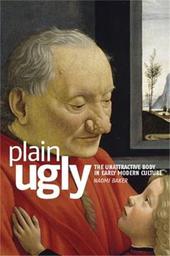
|
Plain Ugly: The Unattractive Body in Early Modern Culture
Paperback / softback
Main Details
| Title |
Plain Ugly: The Unattractive Body in Early Modern Culture
|
| Authors and Contributors |
By (author) Naomi Baker
|
| Physical Properties |
| Format:Paperback / softback | | Pages:272 | | Dimensions(mm): Height 234,Width 156 |
|
| Category/Genre | Literary studies - c 1500 to c 1800 |
|---|
| ISBN/Barcode |
9780719068751
|
| Classifications | Dewey:809.93353 |
|---|
| Audience | | Undergraduate | | Postgraduate, Research & Scholarly | |
|---|
| Illustrations |
Illustrations, black & white
|
|
Publishing Details |
| Publisher |
Manchester University Press
|
| Imprint |
Manchester University Press
|
| Publication Date |
1 April 2015 |
| Publication Country |
United Kingdom
|
Description
Plain ugly examines depictions of physically repellent characters in a striking range of early modern literary and visual texts, offering fascinating insights into the ways in which ugliness and deformity were perceived and represented, particularly with regard to gender and the construction of identity. Available in paperback for the first time, the book focuses closely on English literary culture but also engages with wider European perspectives, drawing on a wide array of primary sources including Italian and other European visual art. Offering illuminating close readings of texts from both high and low culture, it will interest scholars in English literature, cultural studies, women's studies, history and art history, as well as postgraduate and undergraduate students in these disciplines. As an accessible and absorbing account of the power dynamics informing depictions of ugliness (and beauty) in relation to some of the quirkiest literary and visual material to be found in early modern culture, it will also appeal to a wider audience. -- .
Author Biography
Naomi Baker is Lecturer in English Literature at the University of Manchester -- .
ReviewsA valuable compendium of cultural references' Review of English Studies, vol 62 no 257 'Baker probes beneath the surface to excavate the deeper cultural concerns undergirding aesthetic anxieties. This book is much more appealing than its subject matter suggests, and is a contribution to cultural studies as well as to a neglected aspect of early modernity. A critic who flits so effortlessly from Bacon and Burton to Mikhail Bakhtin, Barthes and Judith Butler certainly deserves a broad readership.' Willy Maley, THE -- .
|